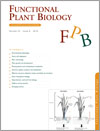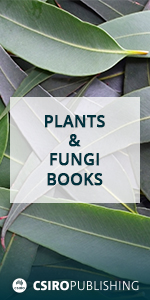
Functional Plant Biology
Volume 43 Number 8 2016
FP15305Understanding the regulation of iron nutrition: can it contribute to improving iron toxicity tolerance in rice?
Molecular mechanisms underlying iron nutrition and regulation are not fully exploited for rice improvement against Fe-toxicity. It is vital to understand these mechanisms to unravel effective pathways for improving rice tolerance. A hypothetical genetic model for Fe toxicity tolerance in rice is presented, and key genes and proteins involved are discussed to provide future prospects for improved rice tolerance to Fe toxicity.
FP15348Rapid stomatal response to fluctuating light: an under-explored mechanism to improve drought tolerance in rice
Stomatal dynamics in response to fluctuating light can affect water use efficiency and carbon assimilation. This work demonstrated a robust correlation between stomatal delays and drought tolerance through large-scale field investigation to 204 rice mini-core population, and highlighted the importance of natural variation of stomatal movements on leaf economics for breeding programs targeting drought resistance in rice.
FP15348 Abstract | FP15348 Full Text | FP15348PDF (751 KB) | FP15348Supplementary Material (773 KB) Open Access Article
FP16025Salinity tolerances of three succulent halophytes (Tecticornia spp.) differentially distributed along a salinity gradient
The distribution of halophytes in saline landscapes is often correlated with varying levels of soil salinity. Three stem-succulent (i.e. reduced and fused leaves) Tecticornia species that occupy different habitats at an inland salt marsh of north-western Australia, differed in survival at extreme salinity (2000 mM NaCl) but had comparable physiological responses and growth tolerances of moderate to high salinity (10–1200 mM NaCl). Knowledge of halophyte responses to extreme salinity has implications in the context of understanding adaptation and community structure in saline environments.
FP16035Separating species and environmental determinants of leaf functional traits in temperate rainforest plants along a soil-development chronosequence
In this research we measured ways in which rainforest trees and shrubs change their leaf function in response to massive changes in soil nutrient availability along a 120 000 year soil chronosequence in New Zealand. Leaf density/thickness and photosynthetic rates were most strongly affected by changes in species along the gradient, while leaf phosphorus and nitrogen content were most strongly influenced by changes in nutrient availability along the gradient. This work indicates that a large proportion of plant physiological response at the community level is based on changes in species, and not a direct response of individual species to environment per se – this should be considered when making predictions of responses of plants to short-term environmental change.
FP16028Integrated transcriptomics and metabolomics reveal induction of hierarchies of resistance genes in potato against late blight
Potato production is threatened worldwide by late blight disease. A metabolo-transcriptomics approach revealed hierarchies of resistance genes triggered following pathogen invasion, including receptors, MAP kinases, phytohormones and transcription factor genes that regulated the downstream genes to biosynthesise phenylpropanoids, flavonoids, fatty acids and alkaloid metabolites to reinforce secondary cell walls, deterring pathogen advancement. These genes can be used in breeding following validation.
FP15385Identification of novel stress-responsive biomarkers from gene expression datasets in tomato roots
In nature and in the field, plants and crops are commonly exposed to different stresses. By screening public gene expression data, we identified several conserved stress-responsive genes in tomato roots that could be used as biomarkers to rapidly evaluate the response of salt-tolerant cultivars and wild species for which sufficient genetic information is not yet available.
FP15235Effects of plant growth stage and leaf aging on the response of transpiration and photosynthesis to water deficit in sunflower
Water deficit in sunflower is a major concern regarding the context of producing oilseed crops with limited water inputs. We analysed the transpiration and photosynthesis processes under water deficit and found that transpiration was more affected than photosynthesis, but sensitivity depended on leaf age, plant growth stage and genotype. Our results could help to improve phenotyping methods and crop modelling under water deficit.




